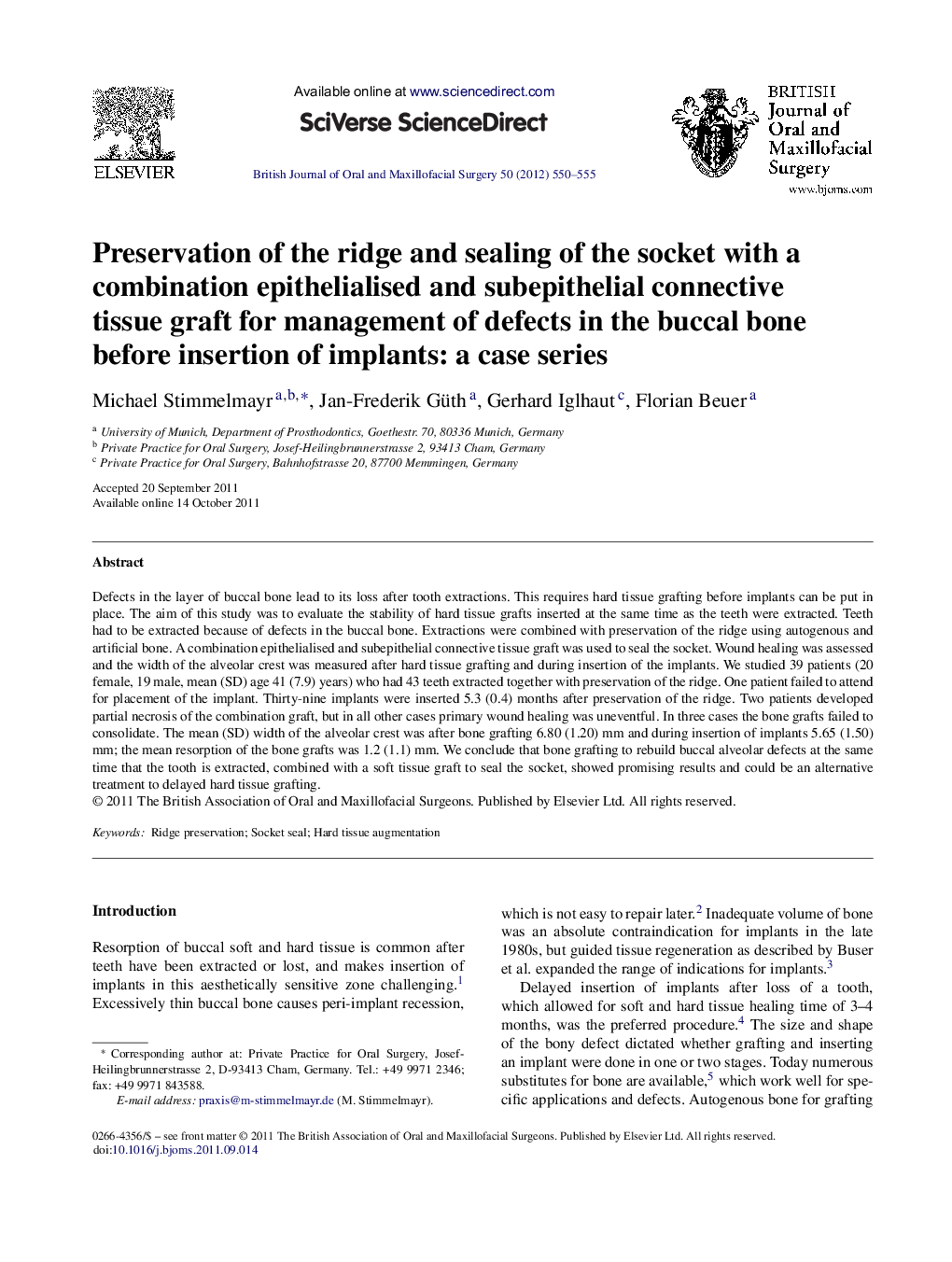| Article ID | Journal | Published Year | Pages | File Type |
|---|---|---|---|---|
| 3124018 | British Journal of Oral and Maxillofacial Surgery | 2012 | 6 Pages |
Defects in the layer of buccal bone lead to its loss after tooth extractions. This requires hard tissue grafting before implants can be put in place. The aim of this study was to evaluate the stability of hard tissue grafts inserted at the same time as the teeth were extracted. Teeth had to be extracted because of defects in the buccal bone. Extractions were combined with preservation of the ridge using autogenous and artificial bone. A combination epithelialised and subepithelial connective tissue graft was used to seal the socket. Wound healing was assessed and the width of the alveolar crest was measured after hard tissue grafting and during insertion of the implants. We studied 39 patients (20 female, 19 male, mean (SD) age 41 (7.9) years) who had 43 teeth extracted together with preservation of the ridge. One patient failed to attend for placement of the implant. Thirty-nine implants were inserted 5.3 (0.4) months after preservation of the ridge. Two patients developed partial necrosis of the combination graft, but in all other cases primary wound healing was uneventful. In three cases the bone grafts failed to consolidate. The mean (SD) width of the alveolar crest was after bone grafting 6.80 (1.20) mm and during insertion of implants 5.65 (1.50) mm; the mean resorption of the bone grafts was 1.2 (1.1) mm. We conclude that bone grafting to rebuild buccal alveolar defects at the same time that the tooth is extracted, combined with a soft tissue graft to seal the socket, showed promising results and could be an alternative treatment to delayed hard tissue grafting.
